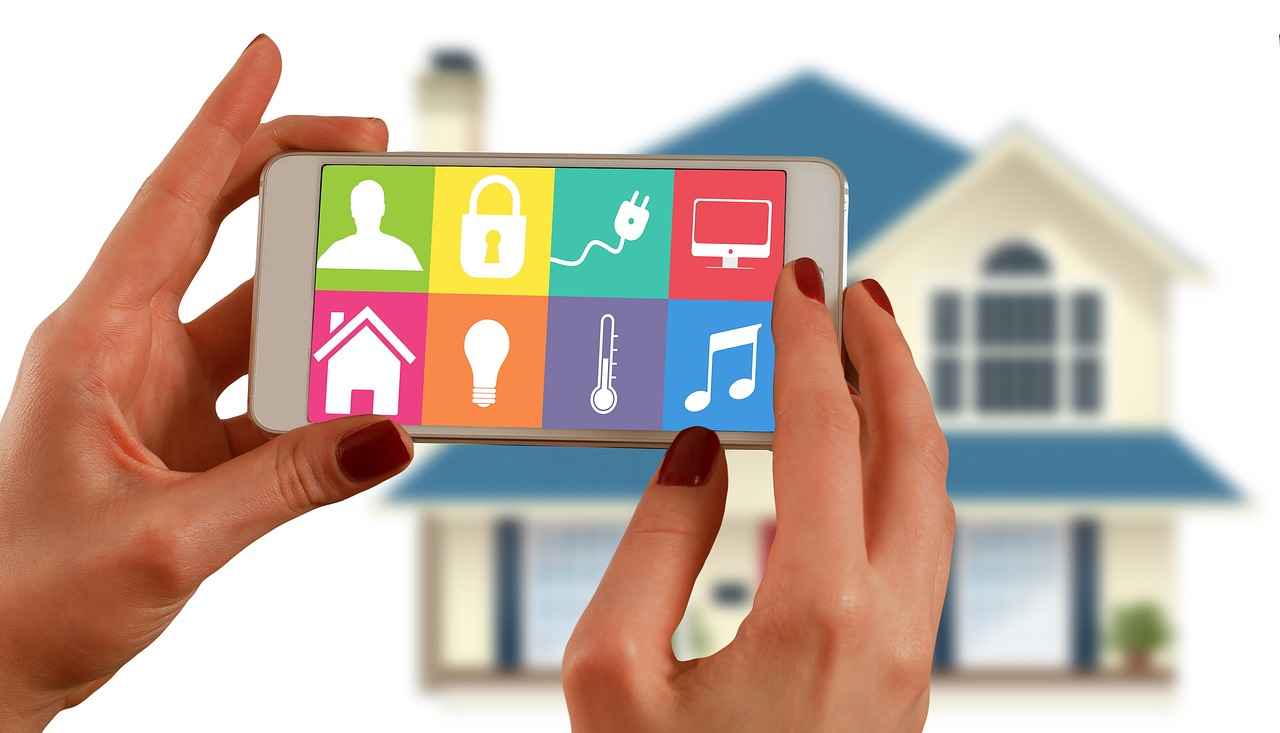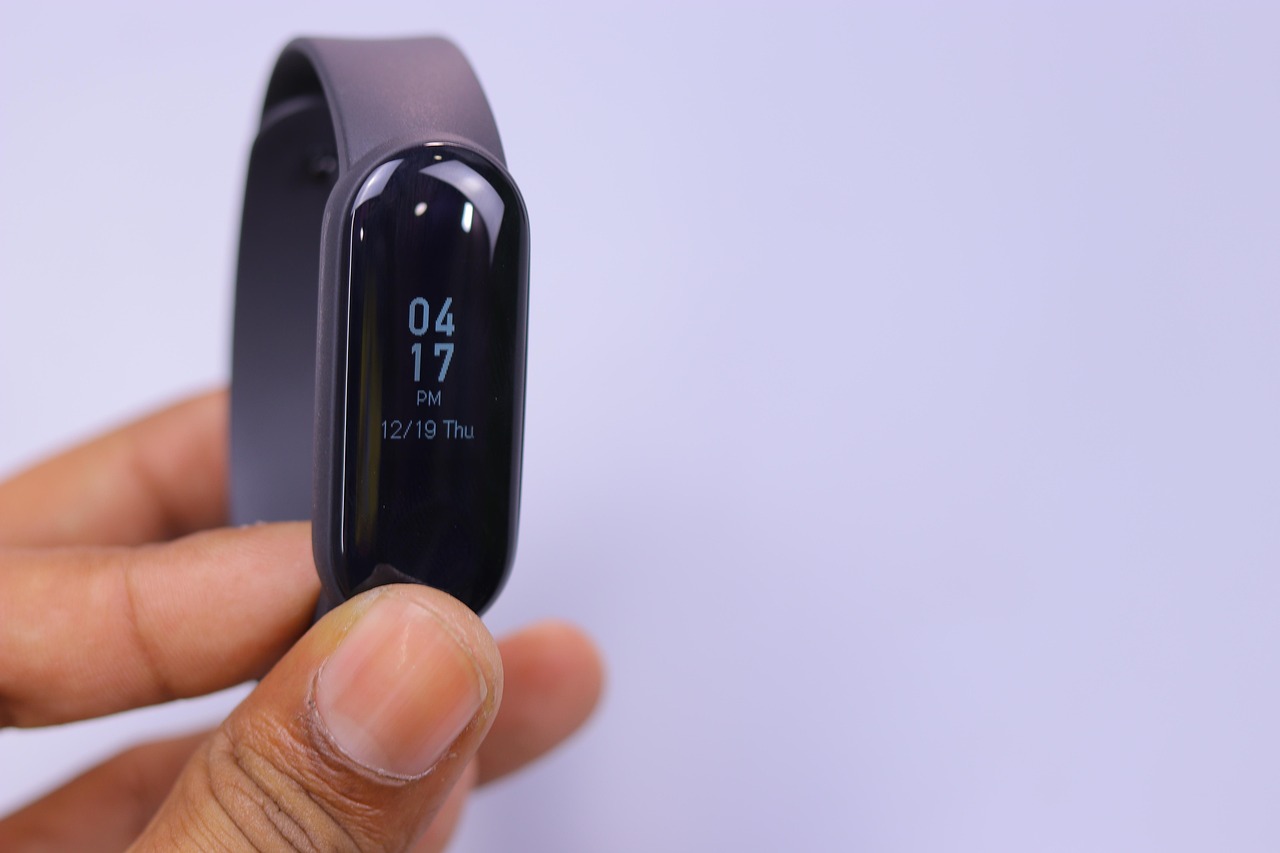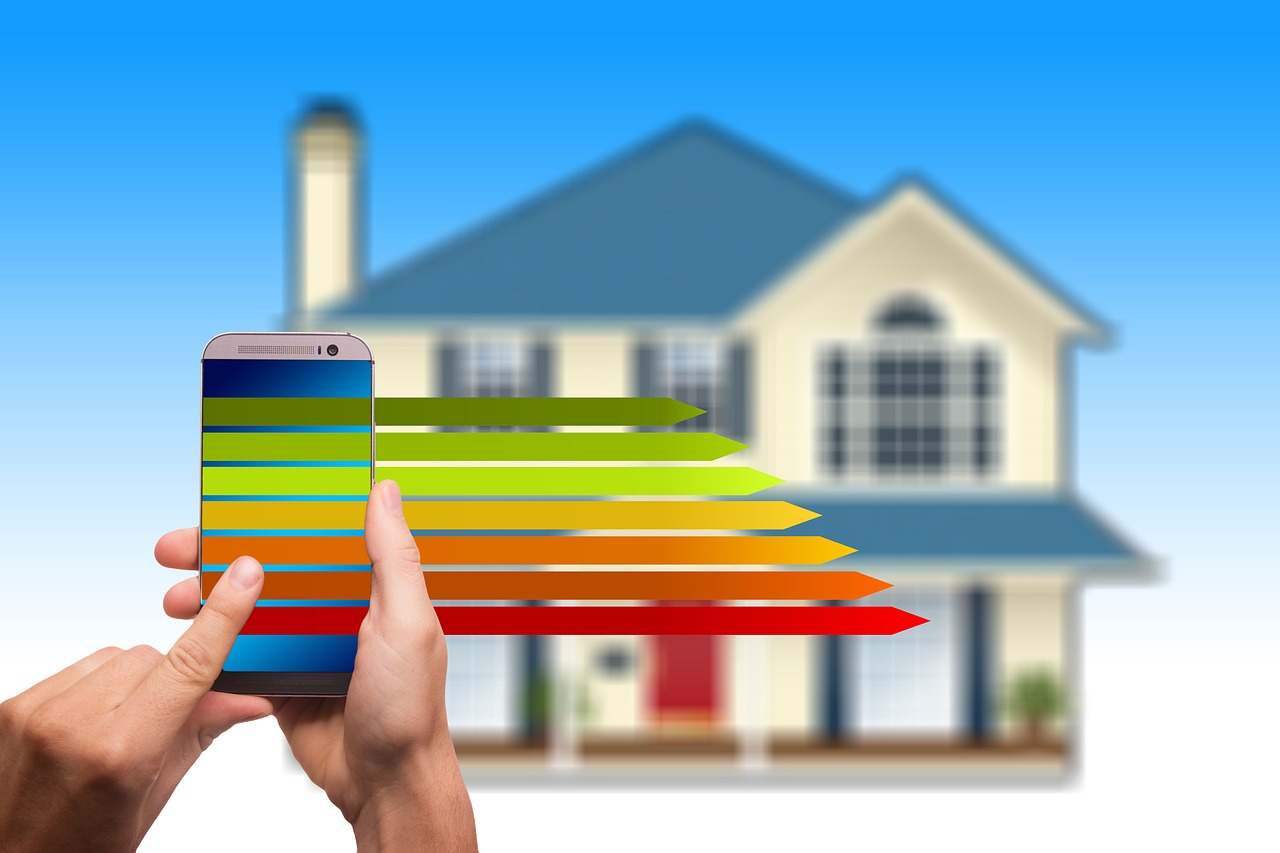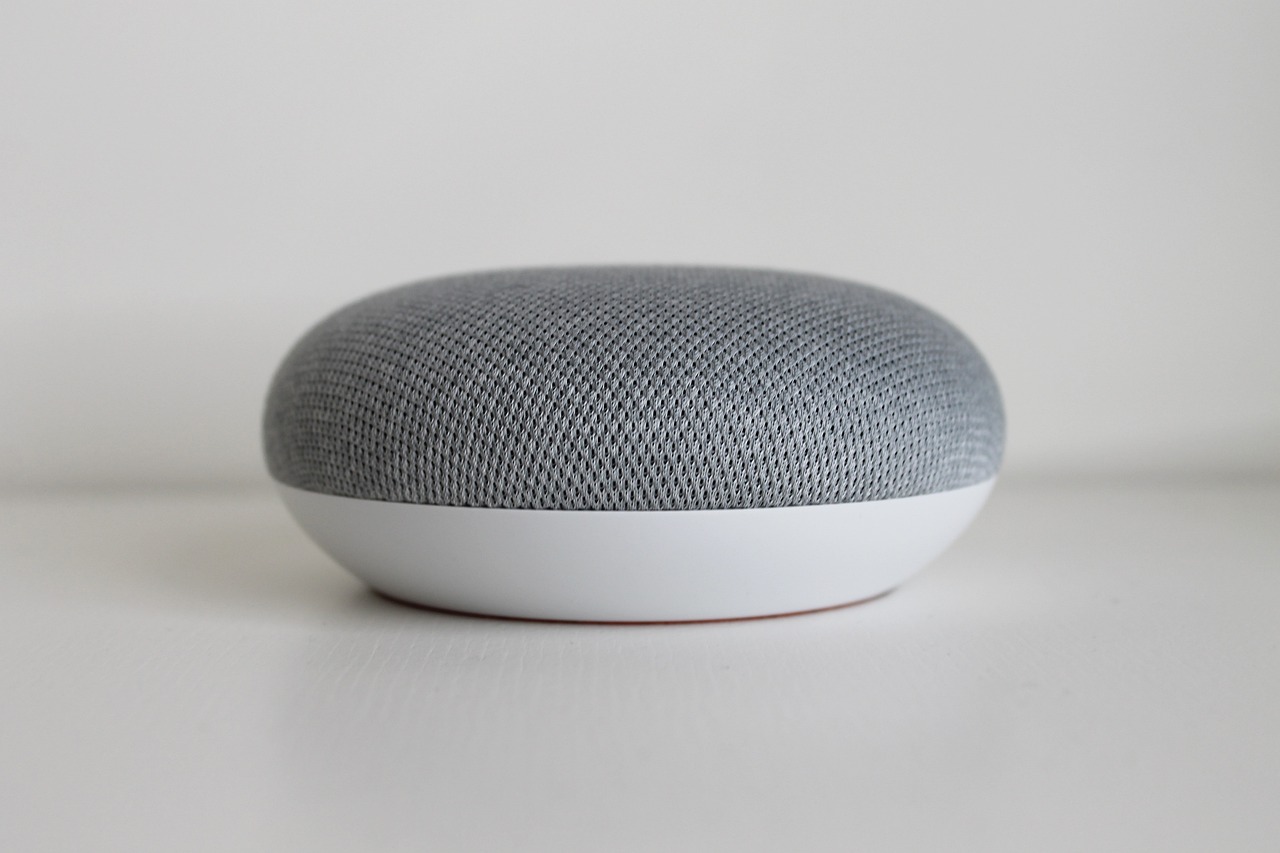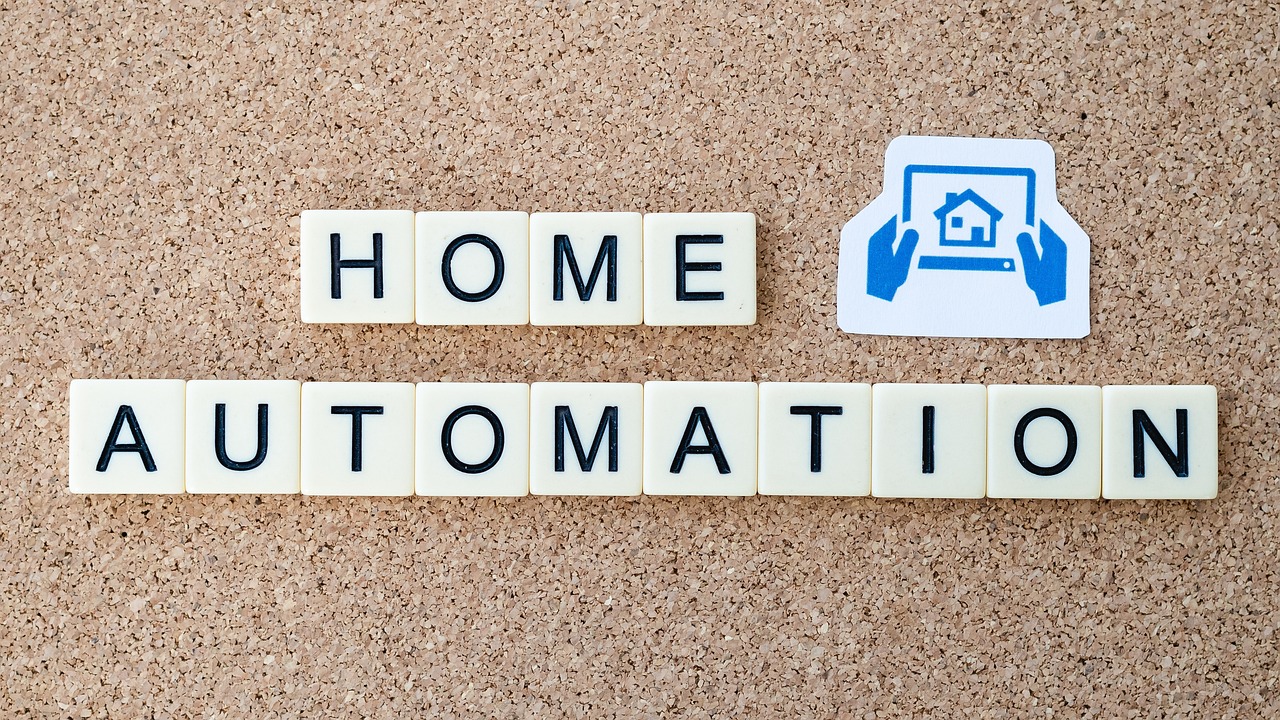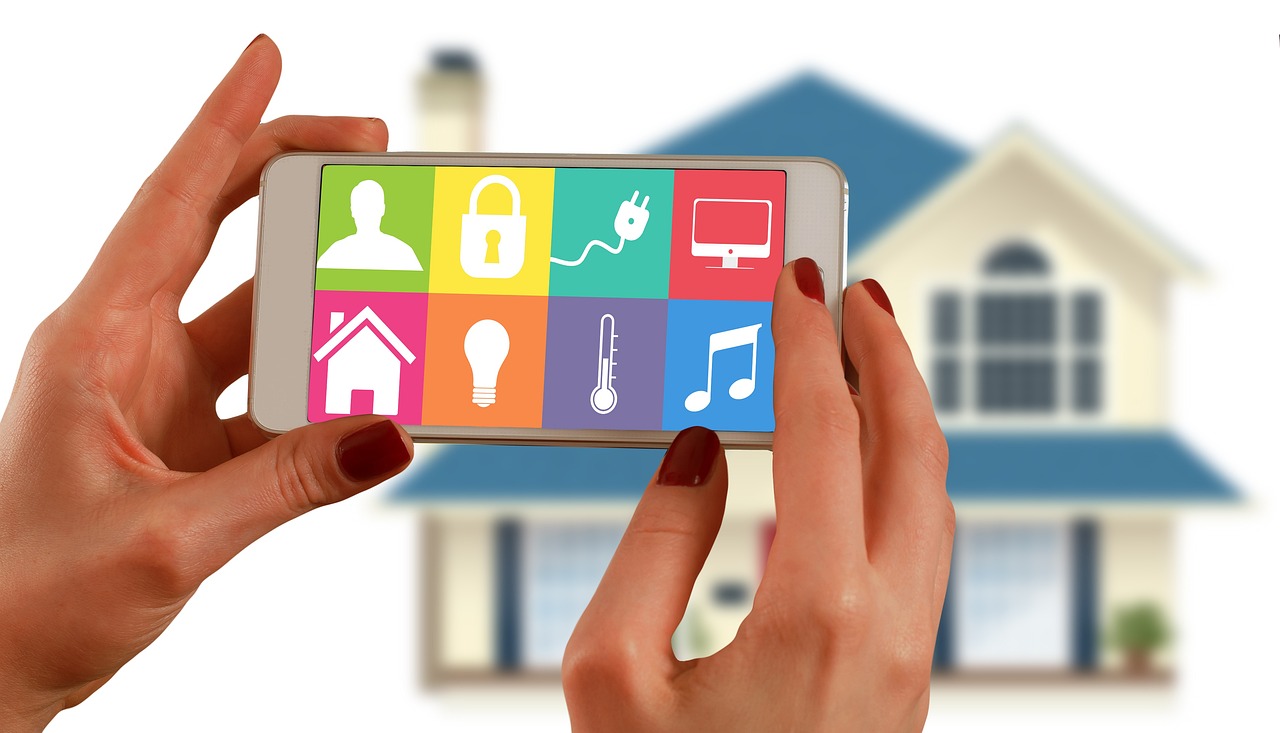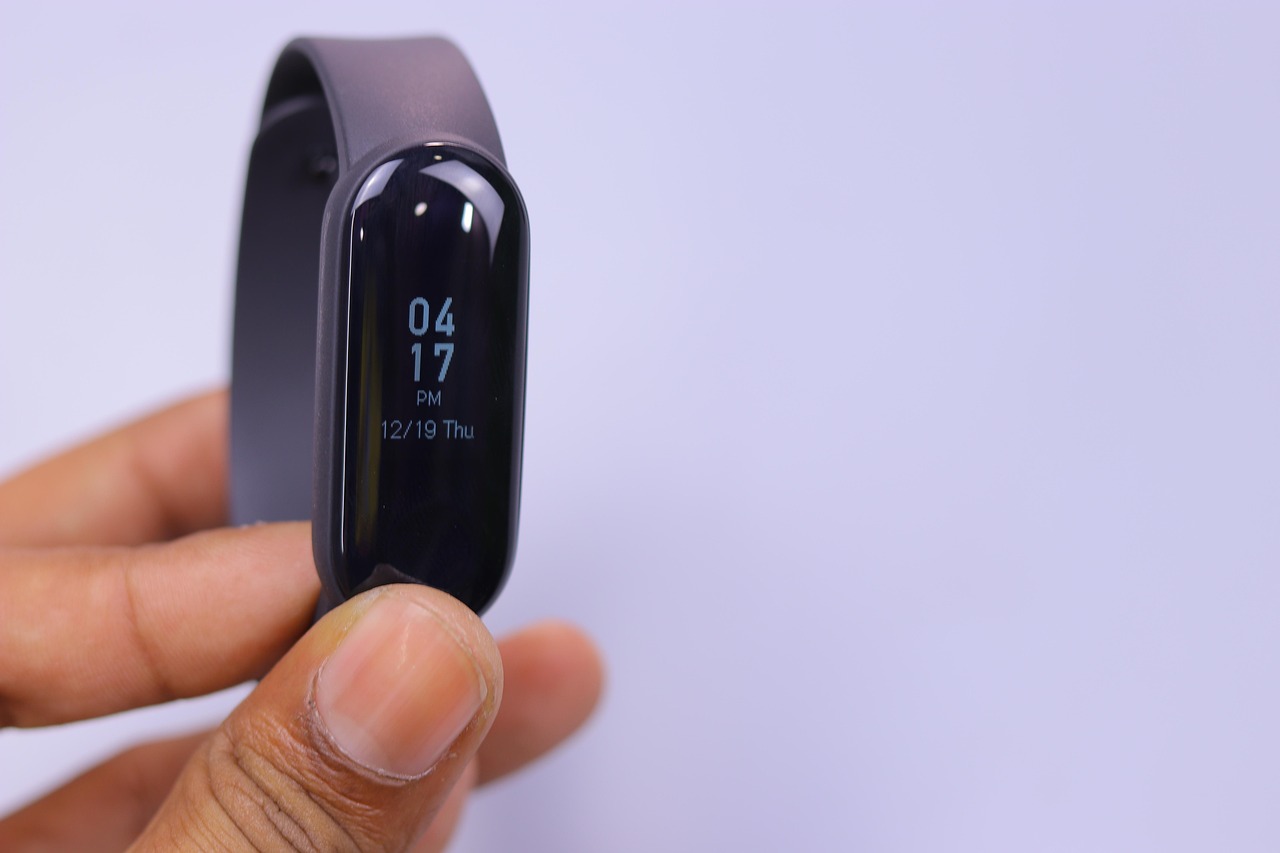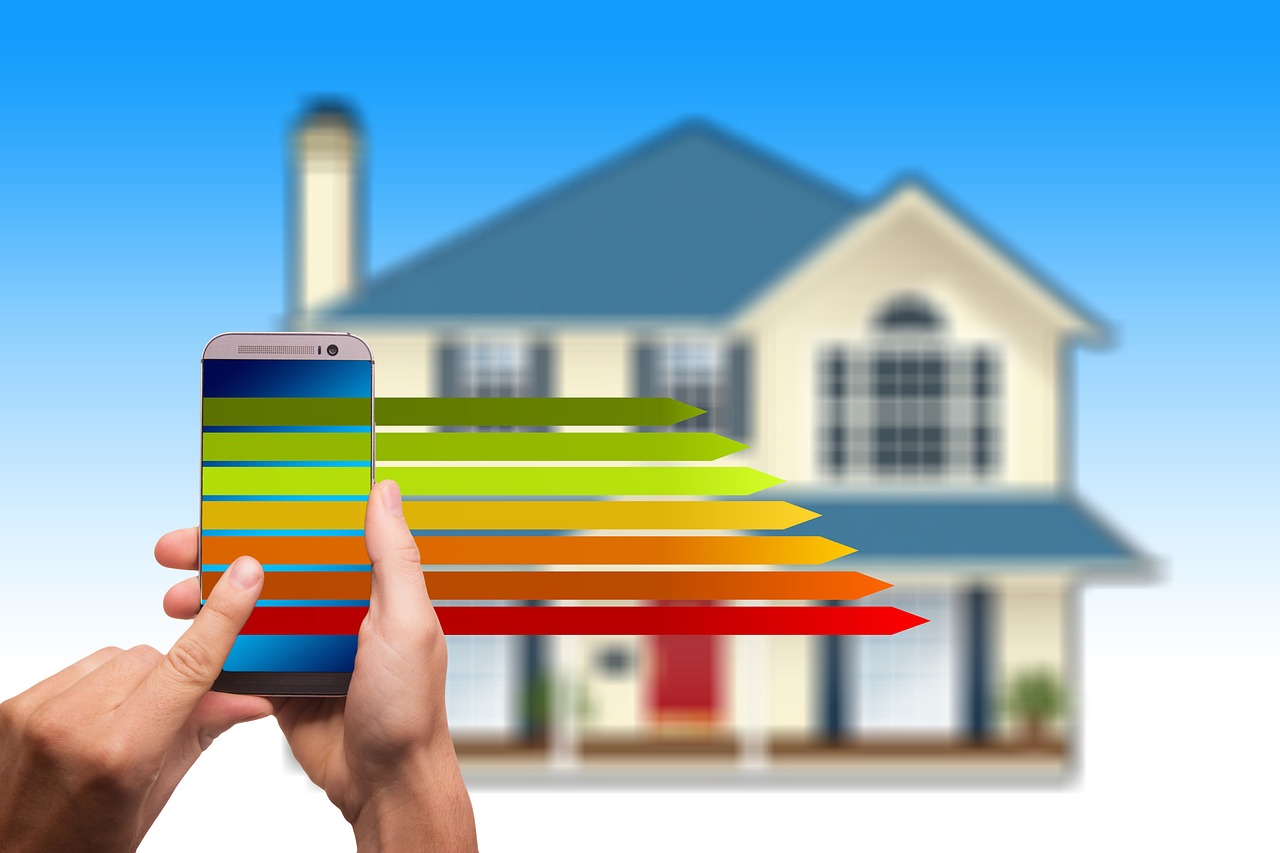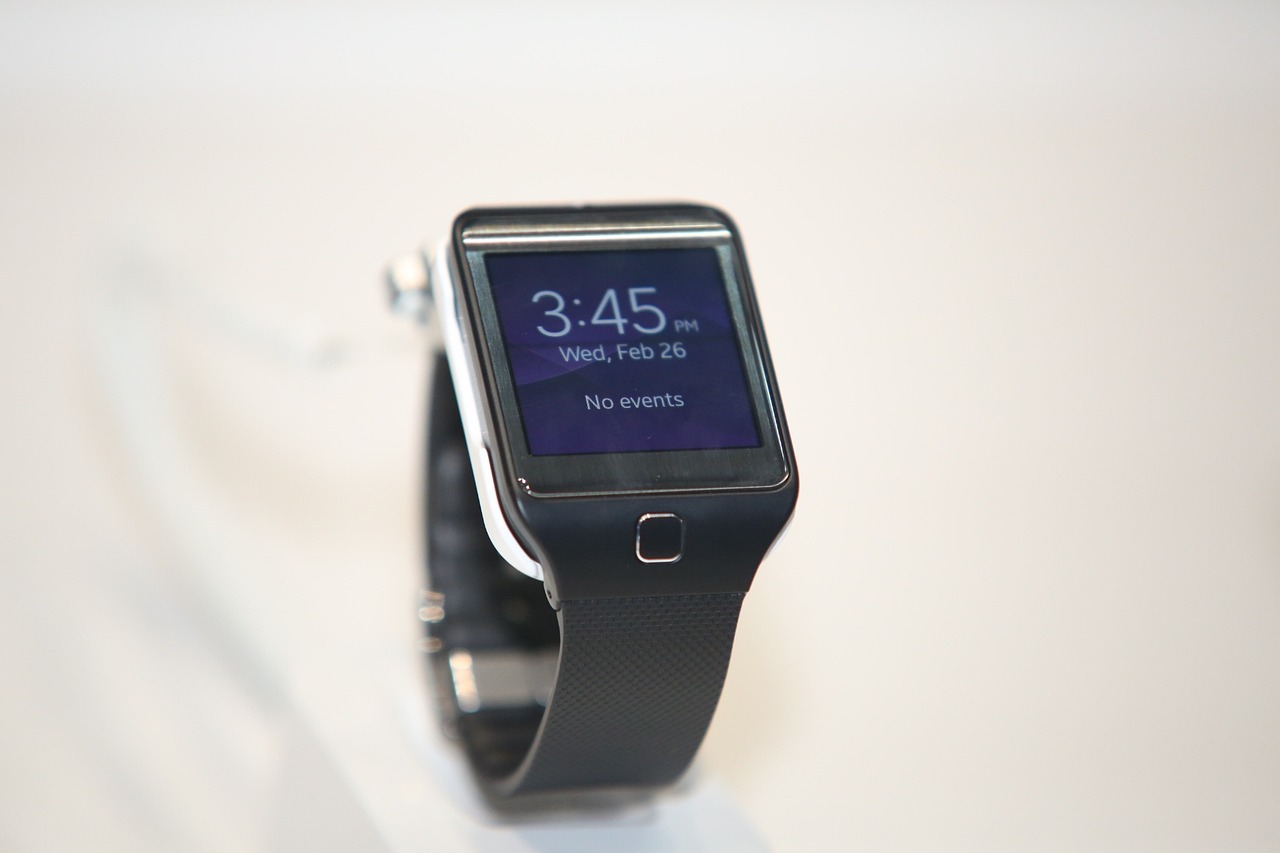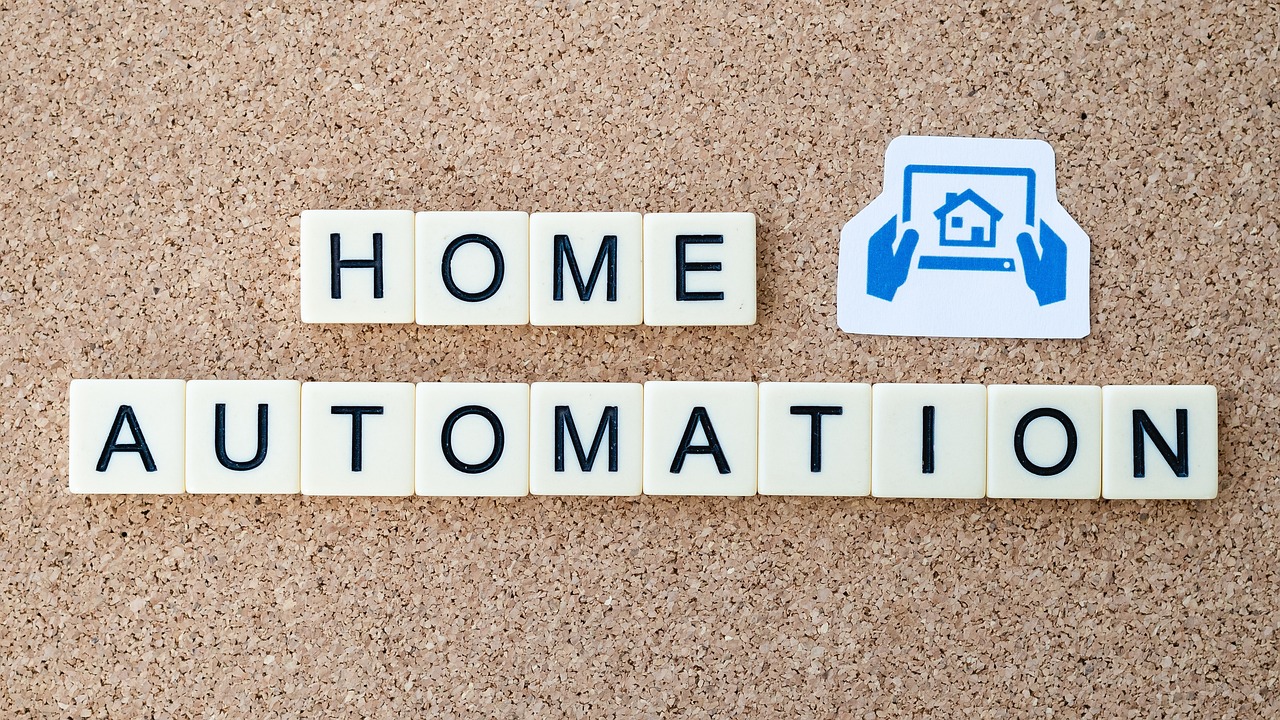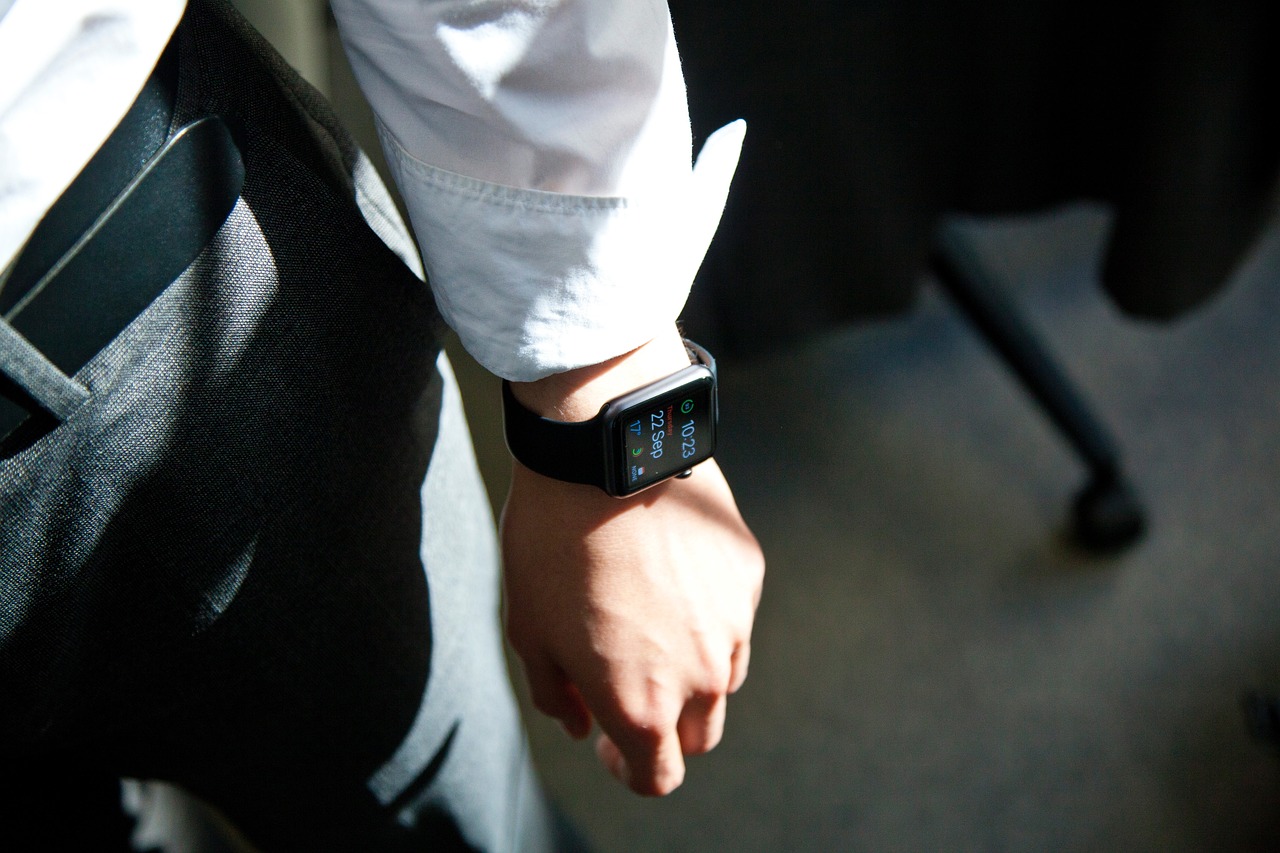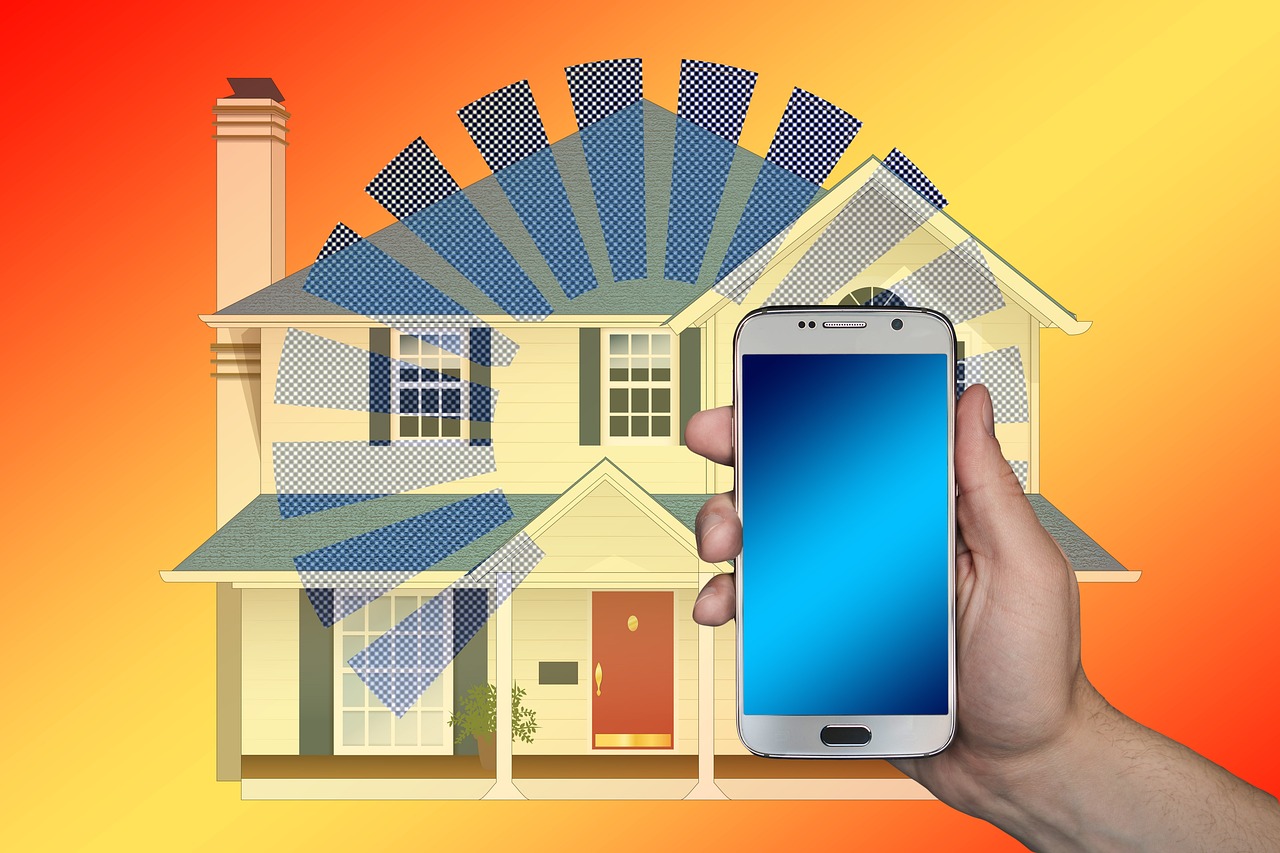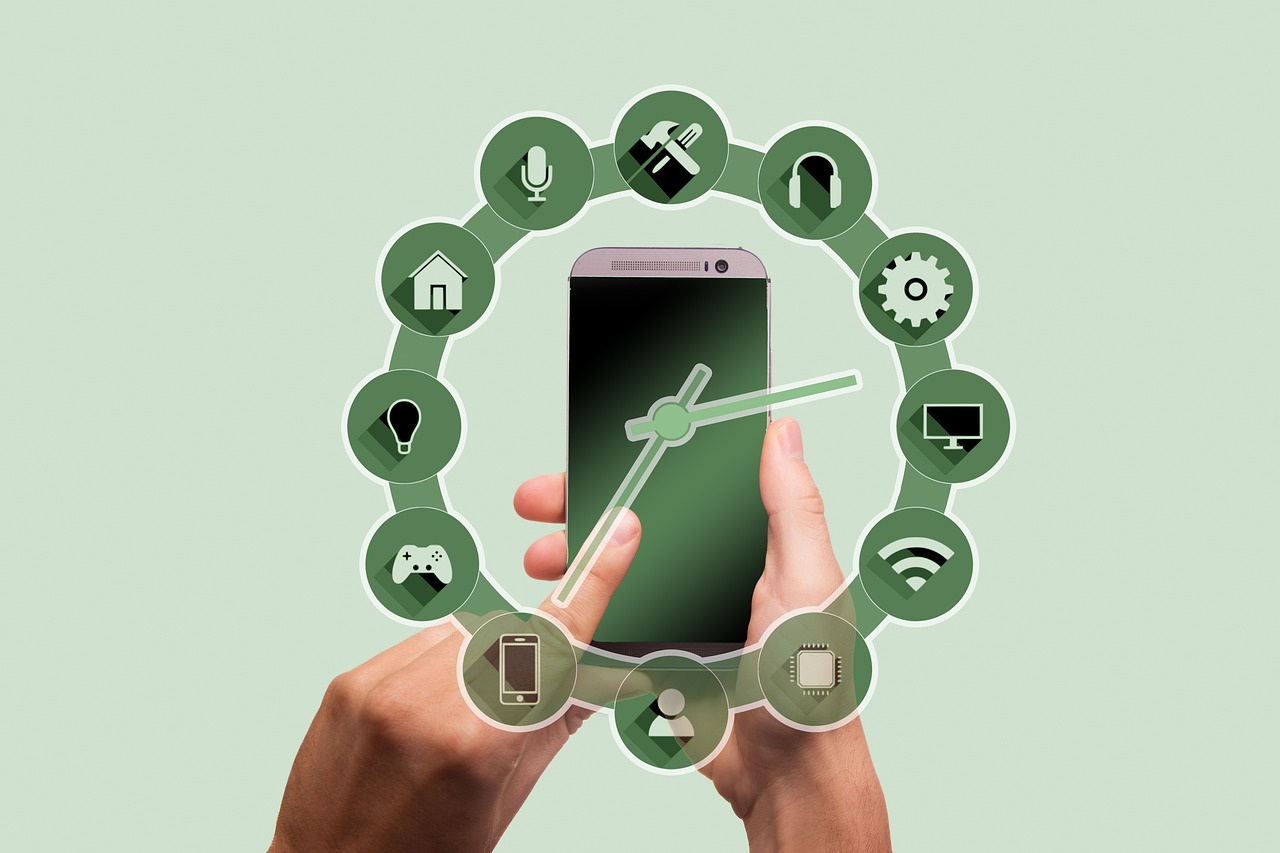This article delves into the top smart home security devices available today, providing in-depth insights into their features, benefits, and how they can significantly enhance your home security.
- Smart Security Cameras: Essential for monitoring your home, these devices offer real-time video feeds and alerts, enabling you to keep an eye on your property from anywhere.
- Smart Doorbell Cameras: These devices allow you to see and communicate with visitors at your door, often featuring motion detection and night vision for enhanced protection.
- Smart Locks: Offering keyless entry, smart locks enhance security and allow you to manage access remotely, tracking who enters and exits your home.
- Home Security Systems: Comprehensive systems integrate various devices, including alarms and sensors, to provide robust security solutions.
- Smart Motion Sensors: These sensors detect movement and send alerts to your smartphone, adding an extra layer of security to your home.
- Smart Lighting Systems: Control your home’s lighting remotely to create the illusion of occupancy when you are away, deterring potential intruders.
- Smart Alarms: Providing alerts for potential security breaches, smart alarms ensure your home is protected 24/7.
- Smart Home Hubs: Serve as a central control point for all your smart devices, allowing seamless integration and automation for enhanced security.
- Smart Home Security Apps: These mobile applications allow users to monitor and control their smart security devices remotely, offering convenience and peace of mind.
- Privacy Considerations: While enhancing security, it’s crucial to consider privacy implications and select devices that prioritize user data protection.
- Cost of Smart Home Security Devices: Understanding the pricing of these devices is vital for budgeting, with options available for various budgets.
Conclusion: In summary, smart home security devices offer a wide range of benefits that can significantly enhance the safety of your home. By carefully selecting the right combination of devices, you can effectively protect your family with ease.

1. Smart Security Cameras
Smart Security Cameras are becoming increasingly vital in today’s world, offering homeowners a reliable way to monitor their properties. These devices not only provide real-time video feeds but also send alerts directly to your smartphone, enabling you to keep an eye on your home from anywhere in the world. With advancements in technology, smart security cameras have evolved to include various features that enhance their effectiveness and usability.
- High Definition Video Quality: Most modern smart security cameras offer HD video recording, allowing you to capture clear images and details, which is crucial for identifying intruders or monitoring deliveries.
- Two-Way Audio: This feature allows you to communicate with anyone on your property through the camera, whether it’s a delivery person or a potential intruder, providing an added layer of security.
- Night Vision: Many smart cameras come equipped with infrared night vision capabilities, ensuring you can monitor your property even in low-light conditions.
- Cloud Storage: With cloud storage options, you can save video footage securely online, making it easy to access past recordings whenever needed.
Moreover, smart security cameras can seamlessly integrate with other smart home devices, creating a comprehensive security system that enhances your home’s safety. For instance, when motion is detected, your camera can trigger outdoor lights to illuminate the area, deterring potential intruders.
In terms of installation, most smart security cameras are designed for easy setup, often requiring just a Wi-Fi connection and a smartphone app. This user-friendly approach ensures that even those who are not tech-savvy can benefit from enhanced security measures.
Overall, investing in smart security cameras is a proactive step towards safeguarding your home and loved ones. With the ability to monitor activities in real-time and receive instant alerts, you can enjoy peace of mind knowing that your property is being watched over, no matter where you are.

2. Smart Doorbell Cameras
Smart Doorbell Cameras have become an essential component of modern home security systems. These innovative devices not only enhance safety but also provide convenience, allowing homeowners to monitor their front door from anywhere in the world.
With the rise in popularity of smart home technology, doorbell cameras have emerged as a crucial tool for protecting your home. They enable you to see and communicate with visitors at your door in real-time, offering peace of mind whether you are at home or away.
- Two-Way Audio: This feature allows homeowners to talk to visitors directly through their smartphone or tablet, providing a sense of security and convenience.
- HD Video Quality: Most smart doorbell cameras come equipped with high-definition video capabilities, ensuring clear visuals of anyone approaching your door.
- Cloud Storage: Many models offer cloud storage options, allowing you to save and review footage whenever needed, which is critical for security purposes.
Smart doorbell cameras often include advanced features that significantly improve home security:
- Motion Detection: This technology sends alerts to your smartphone whenever movement is detected near your door, ensuring you are always aware of any activity.
- Night Vision: Equipped with infrared technology, these cameras can capture clear images in low-light conditions, providing 24/7 surveillance.
Some of the leading brands in the smart doorbell camera market include:
- Ring: Known for its user-friendly interface and extensive features.
- Nest: Offers seamless integration with other smart home devices.
- Arlo: Renowned for high-quality video and advanced motion detection capabilities.
In conclusion, smart doorbell cameras are a vital addition to any home security system. They not only provide a visual connection to your front door but also enhance your overall safety with features like motion detection and night vision. Investing in a reliable smart doorbell camera can significantly improve your home’s security, ensuring that you can monitor and interact with visitors from anywhere.
2.1 Features of Smart Doorbell Cameras
Features of Smart Doorbell Cameras
Smart doorbell cameras have revolutionized home security, providing homeowners with a versatile tool to monitor their front door. These devices are equipped with several advanced features that not only enhance security but also offer convenience for everyday use. Here are some of the key features:
- Two-Way Audio: This feature allows homeowners to communicate directly with visitors or delivery personnel through their smartphone. Whether you’re at home or away, you can greet guests, provide instructions, or deter potential intruders.
- HD Video Quality: Most smart doorbell cameras offer high-definition video recording, ensuring clear and detailed footage. This clarity is essential for identifying visitors and capturing any suspicious activity.
- Cloud Storage: Many models come with cloud storage options, allowing users to save and access video footage remotely. This feature ensures that you can review recorded events even if your device is stolen or damaged.
- Motion Detection: Smart doorbell cameras are equipped with motion sensors that trigger alerts when movement is detected. This feature is crucial for monitoring unexpected visitors or potential threats.
- Night Vision: Enhanced night vision capabilities enable the camera to capture clear video even in low-light conditions. This feature ensures that your home is monitored effectively around the clock.
- Integration with Smart Home Systems: Most smart doorbell cameras can easily integrate with other smart home devices, such as alarms and lighting systems. This allows for a cohesive security strategy that can be managed from a single app.
In summary, smart doorbell cameras are equipped with features that provide enhanced security and convenience for homeowners. With two-way audio, HD video, cloud storage, and other advanced capabilities, these devices are an indispensable part of modern home security systems.
2.1.1 Motion Detection
One of the most significant advancements in modern security technology is motion detection. This feature is integral to smart doorbell cameras and security systems, providing users with real-time alerts about any movement detected around their property. With motion detection, you can stay informed about activities at your door, ensuring that you never miss a visitor, package delivery, or potential intruder.
When motion is detected, the system sends an immediate notification to your smartphone, allowing you to take action if necessary. This instantaneous feedback is crucial for enhancing your home security, as it enables you to monitor your property actively, even when you are not physically present.
Moreover, many smart doorbell cameras come equipped with advanced features that allow you to customize the sensitivity of motion detection. This means that you can set the system to ignore minor movements, such as passing cars or swaying trees, while still alerting you to significant activity, such as someone approaching your door.
Additionally, some systems utilize AI technology to differentiate between humans and pets, reducing unnecessary alerts and providing a more tailored security experience. This differentiation is especially beneficial for families with pets, as it minimizes false alarms and enhances the overall usability of the device.
Incorporating motion detection into your home security system not only provides peace of mind but also acts as a deterrent for potential intruders. The knowledge that a camera is actively monitoring the area can discourage unwanted visitors from approaching your property.
In conclusion, motion detection is a vital component of modern smart security systems, offering users enhanced awareness and control over their home safety. By investing in devices with advanced motion detection capabilities, you can protect your home and family more effectively.
2.1.2 Night Vision
Night vision technology is a critical feature in modern security cameras and doorbell systems, allowing for clear video capture in low-light conditions. This capability is particularly important for enhancing security during nighttime hours when visibility is limited, and potential threats are harder to detect.
With night vision, these devices utilize advanced infrared technology to illuminate dark areas without visible light. This means that even in complete darkness, you can receive high-quality video footage of your surroundings. This is essential for homeowners who want to monitor their property effectively, especially when they are away or during late-night hours.
Moreover, night vision capabilities often come equipped with features such as:
- Infrared LEDs: These provide illumination that is invisible to the naked eye but allows the camera to capture clear images.
- Automatic Switching: Many cameras can automatically switch between day and night modes based on the ambient light, ensuring optimal performance at all times.
- Enhanced Motion Detection: Night vision improves the accuracy of motion detection systems, alerting homeowners to any unusual activity even in darkness.
Incorporating night vision into your home security system not only enhances your ability to monitor your property but also acts as a deterrent against potential intruders who are aware that they are being watched, even in low light. Ultimately, investing in night vision technology can significantly bolster your home security strategy, providing peace of mind and ensuring the safety of your loved ones.
2.2 Popular Smart Doorbell Brands
When it comes to enhancing your home security, smart doorbell cameras have become a vital tool. These devices not only allow you to see who is at your door but also provide features that can significantly improve your overall safety. Several brands lead the market, each offering unique features tailored to meet various needs and preferences.
- Ring: Known for its user-friendly interface, Ring offers a variety of models equipped with features such as HD video quality, two-way audio, and advanced motion detection. The Ring app allows users to receive instant notifications and view live feeds from their smartphones, ensuring you never miss a visitor.
- Nest: A product of Google, Nest doorbell cameras are praised for their sleek design and smart integration with other Google Home devices. With features like facial recognition and night vision, Nest doorbells provide a comprehensive security solution that adapts to your lifestyle.
- Arlo: Arlo specializes in wireless security solutions, and their smart doorbell cameras are no exception. With features such as HD video, color night vision, and a wide field of view, Arlo cameras ensure that you have a complete picture of your front porch. Additionally, they offer customizable motion zones, allowing you to focus on specific areas of interest.
Each of these brands brings something unique to the table, making it essential to evaluate your specific needs before making a purchase. Whether you prioritize video quality, integration with smart home devices, or advanced detection capabilities, there is a smart doorbell camera that can enhance your home security.
In conclusion, investing in a smart doorbell camera from a reputable brand can significantly improve your home security. By choosing the right device, you can ensure that your family is protected and informed of any activity at your doorstep.

3. Smart Locks
Smart locks are revolutionizing home security by offering keyless entry and enhanced protection for your property. These innovative devices not only eliminate the need for traditional keys but also provide a range of features designed to give homeowners peace of mind.
One of the most significant advantages of smart locks is the ability to manage access remotely. Whether you’re at work, on vacation, or simply out for the day, you can control who enters your home through your smartphone. This feature is particularly beneficial for those who frequently have guests or service providers, as it allows you to grant temporary access without needing to be physically present.
Additionally, smart locks often come equipped with activity tracking capabilities. This means you can monitor who enters and exits your home, providing an added layer of security. Many models send notifications to your phone whenever someone uses the lock, ensuring you’re always aware of who is coming and going.
There are several types of smart locks available, including:
- Deadbolts: These provide robust security and are often easy to install.
- Lever locks: Ideal for homes with a more traditional aesthetic.
- Smart padlocks: Perfect for outdoor use, such as sheds or gates.
The benefits of using smart locks extend beyond convenience. They often include advanced security features such as auto-locking, which secures your door automatically after a set period. Furthermore, many smart locks integrate seamlessly with other smart home devices, allowing for comprehensive home automation.
In conclusion, smart locks are a vital component of modern home security. They not only enhance safety but also provide unparalleled convenience and control for homeowners. By investing in a smart lock, you can significantly improve your home’s security while enjoying the benefits of cutting-edge technology.
3.1 Types of Smart Locks
Smart locks have revolutionized the way we secure our homes, providing both convenience and enhanced security. They come in various forms, each designed to meet different needs and preferences. Below, we explore the major types of smart locks available on the market today:
- Smart Deadbolts: These locks replace traditional deadbolts and offer advanced security features. They often include keyless entry options, allowing you to unlock your door using a smartphone app or a keypad. Some models even support biometric access, such as fingerprint scanning, providing an extra layer of security.
- Lever Locks: Lever smart locks are designed for doors that use a lever handle. They combine the convenience of smart technology with the traditional lever mechanism. These locks are ideal for homes with elderly residents or those with mobility issues, as they are easier to operate than standard deadbolts.
- Smart Padlocks: Perfect for securing gates, sheds, or lockers, smart padlocks offer flexibility and portability. They can be unlocked via Bluetooth using a smartphone app or through a keypad. Many smart padlocks also feature a built-in alarm system that alerts you if someone tries to tamper with them.
- Smart Mortise Locks: These locks are integrated into the door itself, providing a sleek appearance and robust security. Smart mortise locks often come with features like remote access and activity logs, allowing homeowners to monitor who enters and exits their property.
- Smart Keyless Entry Systems: These systems provide a completely keyless experience, using technologies like NFC (Near Field Communication) or Wi-Fi to unlock doors. They allow multiple users to gain access without the need for physical keys, making them ideal for families or rental properties.
Each type of smart lock offers unique benefits, catering to various security needs and lifestyles. Whether you prioritize high-tech features or ease of use, there is a smart lock suitable for every home.
3.2 Benefits of Using Smart Locks
Smart locks have revolutionized the way we secure our homes, offering a range of benefits that traditional locks simply cannot match. These innovative devices provide not only convenience but also enhanced security features that cater to modern lifestyles.
- Convenience: Smart locks eliminate the need for physical keys. With a simple tap on your smartphone or a voice command, you can unlock your door. This is particularly beneficial when your hands are full or when you are returning home in the dark.
- Enhanced Security: Many smart locks are equipped with advanced security features, such as encryption technology and tamper alerts. This ensures that your home remains protected against unauthorized access.
- Temporary Access: One of the standout features of smart locks is the ability to grant temporary access to guests or service providers. You can create unique access codes for visitors, which can be set to expire after a specified time, providing peace of mind when you are away from home.
- Remote Monitoring: Smart locks allow you to monitor who enters and exits your home in real-time. You can receive notifications when someone uses their access code, ensuring you are always informed about who is coming and going.
- Integration with Smart Home Systems: Many smart locks can easily integrate with other smart home devices, such as security cameras and alarm systems. This creates a cohesive security network that enhances overall home safety.
In conclusion, smart locks offer a myriad of benefits that significantly improve home security while providing unparalleled convenience. By adopting this technology, you can enjoy a safer and more manageable living environment.

4. Home Security Systems
Home security systems are essential for safeguarding your home and loved ones. These systems integrate various devices, including cameras, alarms, and sensors, to provide a comprehensive security solution that can be tailored to meet your specific needs. In this section, we will delve deeper into the components and benefits of home security systems, ensuring you have all the information needed to make an informed decision.
Comprehensive home security systems are designed to offer a multi-layered approach to safety. By combining different technologies, they create a robust defense against intruders and other threats. Here, we will explore the critical components of these systems and how they work together to protect your home.
- Security Cameras: These devices provide real-time surveillance and can be accessed remotely via smartphones.
- Alarms: Alarm systems alert homeowners and authorities in the event of a breach.
- Motion Sensors: These detect movement and trigger alerts, adding an additional layer of security.
- Control Panels: Central hubs that manage all connected devices, allowing for easy monitoring and control.
Home security systems can be monitored in two primary ways:
- Professional Monitoring: This service involves a dedicated team that monitors your system 24/7, ensuring immediate response to alarms.
- Self-Monitoring: Many systems now offer mobile apps that allow you to monitor your home security from anywhere, giving you control at your fingertips.
Choosing the right monitoring option depends on your lifestyle and security needs. Both methods have their advantages, and understanding them can help you make the best choice for your home.
Investing in a home security system provides numerous benefits:
- Peace of Mind: Knowing that your home is protected allows you to relax and enjoy your life.
- Deterrence: Visible security devices can deter potential intruders from targeting your home.
- Insurance Savings: Many insurance companies offer discounts for homes equipped with security systems.
In conclusion, a comprehensive home security system is a vital investment for any homeowner. By integrating various devices and choosing the right monitoring option, you can create a customized security solution that protects your family and property effectively.
4.1 Components of a Home Security System
A well-rounded home security system is crucial for safeguarding your property and loved ones. These systems are designed to deter break-ins, alert you to potential threats, and provide peace of mind. Below, we explore the essential components that make up a typical home security system, ensuring you have a comprehensive understanding of how they work together to enhance your safety.
- Motion Detectors: These devices are designed to sense movement within a specified area. They can be placed in various locations such as hallways, entry points, and large rooms. When motion is detected, the sensor triggers an alert, notifying homeowners of potential intruders.
- Door and Window Sensors: These sensors are installed on doors and windows and work by detecting when they are opened or closed. If a door or window is breached, the sensor sends an alert to the central control panel, which can then notify the homeowner or a monitoring service.
- Central Control Panel: This is the brain of your security system. It connects all devices and allows homeowners to monitor and control their security setup from one location. Many modern control panels come with user-friendly interfaces and mobile app compatibility, enabling remote access.
- Security Cameras: Cameras provide visual monitoring of your property. They can be installed indoors and outdoors and often come with features such as night vision and two-way audio. Many security cameras can send live video feeds directly to your smartphone.
- Alarms and Sirens: Alarms serve as a deterrent to intruders and alert homeowners and neighbors of a breach. Sirens can be integrated into the system to sound when a sensor is triggered, ensuring immediate attention to potential threats.
In conclusion, a comprehensive home security system comprises various components that work in unison to enhance your home’s safety. By understanding these elements, homeowners can make informed decisions about their security needs, ensuring a safer living environment.
4.2 Monitoring Options
Monitoring Options for Home Security Systems
When it comes to home security systems, one of the most critical decisions you will face is how to monitor these systems. There are two primary options available: professional monitoring and self-monitoring. Each option has its own set of advantages and drawbacks, allowing homeowners to choose the level of oversight that best fits their lifestyle and security needs.
- Professional Monitoring
- With professional monitoring, your security system is monitored 24/7 by trained security personnel.
- In the event of an alarm, professionals can quickly assess the situation and dispatch emergency services if necessary.
- This option often comes with a monthly fee, but it provides peace of mind knowing that experts are watching over your home.
- Self-Monitoring
- Self-monitoring allows homeowners to keep an eye on their property through mobile apps and notifications.
- You can receive real-time alerts on your smartphone, enabling you to respond immediately to any security breaches.
- This option is typically more cost-effective as it usually does not involve monthly fees.
Ultimately, the choice between professional and self-monitoring depends on your personal preferences and circumstances. If you travel frequently or have a busy lifestyle, professional monitoring may be the better option. On the other hand, if you prefer hands-on control and are comfortable managing alerts yourself, self-monitoring could be ideal.
Regardless of the choice you make, it’s essential to ensure that your home security system is set up correctly and that you understand how to utilize the monitoring features effectively. This will maximize your home’s safety and security.

5. Smart Motion Sensors
Smart motion sensors are revolutionizing home security by providing real-time detection of movement and immediate notifications to your smartphone. These devices serve as a crucial line of defense, alerting homeowners to any suspicious activity around their property.
When integrated into your home security system, smart motion sensors can significantly enhance your peace of mind. They use advanced technology to differentiate between humans and pets, reducing false alarms and ensuring that you are only alerted when it truly matters.
5.1 Placement of Motion Sensors
For optimal effectiveness, the placement of motion sensors is critical. Here are some common locations:
- Entrances: Install sensors near doors and windows to monitor access points.
- Hallways: Cover long corridors where intruders might move undetected.
- Garages: Protect your vehicles and storage areas from unauthorized access.
5.2 Integration with Other Devices
Smart motion sensors can be seamlessly integrated with other smart home devices, such as:
- Smart lights: Automatically turn on lights when motion is detected, deterring potential intruders.
- Security cameras: Trigger recording when movement is sensed, providing evidence if needed.
- Alarms: Set off alarms to alert you and deter intruders in real-time.
Furthermore, many smart motion sensors can be controlled through mobile apps, allowing you to adjust settings and monitor activity even when you are away from home.
In conclusion, investing in smart motion sensors is a proactive approach to enhancing your home security. By strategically placing these devices and integrating them with other smart technologies, you can create a comprehensive security network that protects your home and loved ones.
5.1 Placement of Motion Sensors
Strategic placement of motion sensors is essential for effective home monitoring and security. These sensors are designed to detect movement and alert homeowners to potential intruders or unusual activity. To maximize their effectiveness, it is crucial to install them in key locations throughout your home. Below are some common and recommended locations for motion sensor installation:
- Entrances: Placing motion sensors at all entry points, including front and back doors, ensures that any movement is detected as soon as someone approaches your home. This can provide immediate alerts and allow for quick action.
- Hallways: Installing sensors in hallways can help monitor movement within your home, especially during nighttime hours. This is particularly useful for larger homes where movement might go unnoticed.
- Garages: Garages often serve as secondary entry points for intruders. By placing motion sensors in this area, you can enhance security and receive alerts if someone enters your garage.
- Driveways: Motion sensors can also be installed along driveways to detect vehicles approaching your home. This adds an extra layer of security, allowing you to monitor who is arriving at your property.
- Backyards: If you have a backyard, consider placing motion sensors there as well. They can help detect any unauthorized access to your outdoor space, providing peace of mind.
In addition to these locations, it is important to consider the field of view and range of the motion sensors. Ensure they are not obstructed by furniture or landscaping, as this can hinder their effectiveness. Regularly testing and maintaining these devices will also ensure they function correctly and provide reliable alerts.
By strategically placing motion sensors in these critical areas, you can create a comprehensive security network that enhances the safety of your home and family.
5.2 Integration with Other Devices
Smart motion sensors are not just standalone devices; they are integral components of a modern home security ecosystem. These sensors can seamlessly integrate with various other smart devices, such as lights, alarms, and even smart home hubs, to form a comprehensive security network that proactively responds to potential threats.
When a motion sensor detects movement, it can trigger a series of automated actions across your home. For instance, it can activate smart lights, illuminating the area to deter any intruders. This integration not only enhances security but also provides a sense of safety and comfort for the residents.
| Device Type | Integration Benefits |
|---|---|
| Smart Lights | Automatically turn on/off to simulate occupancy, deterring potential burglars. |
| Smart Alarms | Trigger alerts and notifications when motion is detected, ensuring immediate response. |
| Smart Home Hubs | Centralize control of all devices, allowing for coordinated security responses. |
Moreover, with the advancement of technology, many smart motion sensors come equipped with AI capabilities. This allows them to distinguish between normal activities (like pets moving around) and suspicious movements, reducing false alarms and enhancing the overall effectiveness of your security system.
In addition, the integration with mobile apps allows homeowners to receive real-time alerts on their smartphones. This means that you can monitor your home from anywhere, ensuring peace of mind whether you’re at work or on vacation.
Ultimately, the ability to integrate smart motion sensors with other devices transforms your home into a smart security fortress. This interconnectedness not only enhances security but also provides a user-friendly experience, making it easier for homeowners to manage their safety effortlessly.

6. Smart Lighting Systems
Smart Lighting Systems play a pivotal role in enhancing home security. By providing homeowners with the ability to control their lighting remotely, these systems create the illusion of occupancy, which can deter potential intruders when you are away.
Smart lighting systems are designed to allow users to manage their home’s lighting through a smartphone app or voice commands. This capability not only adds convenience but also significantly increases the security of your home.
- Remote Control: With smart lighting, you can turn lights on or off from anywhere in the world. This feature is particularly useful when you are on vacation, as it can simulate your presence at home.
- Scheduling: Many smart lighting systems offer scheduling features, allowing you to set specific times for lights to turn on or off, further enhancing the illusion of occupancy.
- Integration with Motion Sensors: When paired with smart motion sensors, lights can automatically turn on when someone approaches your home, providing an immediate visual deterrent against intruders.
Several brands are leading the market in smart lighting solutions. Notable options include:
- Philips Hue: Known for its extensive range of customizable lighting options.
- LIFX: Offers bright, colorful bulbs that connect directly to Wi-Fi without a hub.
- Wyze: Provides affordable smart lighting options with robust features.
In summary, smart lighting systems are an effective way to enhance your home security. By utilizing remote control features, scheduling, and integration with other smart devices, you can create a safer environment for you and your family. Investing in these systems not only enhances security but also contributes to the overall convenience of modern living.
6.1 Benefits of Smart Lighting for Security
Smart lighting systems play a crucial role in enhancing home security by providing a range of benefits that deter potential intruders and create a sense of safety for residents. By simulating occupancy and utilizing advanced technology, these systems can significantly improve the security of any household.
One of the primary advantages of smart lighting is its ability to mimic your presence at home. When combined with timers or motion sensors, lights can automatically turn on or off at specific times or in response to detected movement. This creates the illusion that someone is home, which can effectively deter intruders looking for an easy target.
Moreover, smart lighting can be controlled remotely through mobile apps, allowing homeowners to adjust their lighting from anywhere. This feature is particularly useful when traveling, as you can program lights to turn on and off at various intervals, further enhancing the perception of occupancy.
Another significant benefit is the integration of smart lighting with other smart home devices. For instance, when paired with smart security cameras and motion sensors, the lights can illuminate areas when motion is detected, providing better visibility and deterring unwanted visitors.
Additionally, the energy efficiency of modern smart lighting systems contributes to both cost savings and environmental benefits. Many smart bulbs use LED technology, which consumes less energy and has a longer lifespan compared to traditional bulbs. This not only reduces electricity bills but also minimizes the need for frequent replacements.
In conclusion, implementing smart lighting systems in your home can provide enhanced security through the simulation of occupancy, remote control capabilities, and integration with other smart devices. By investing in these technologies, homeowners can create a safer living environment while enjoying the added benefits of energy efficiency and convenience.
6.2 Popular Smart Lighting Brands
Popular Smart Lighting Brands play a crucial role in transforming your home into a smart ecosystem. These brands provide innovative solutions that seamlessly integrate with various smart home devices, enhancing convenience and security. In this section, we will explore some of the leading brands in the smart lighting industry, their unique offerings, and how they can elevate your home automation experience.
- Philips Hue: A pioneer in the smart lighting space, Philips Hue offers a wide range of smart bulbs and fixtures that can be controlled via an app or voice commands. Their products are known for their vibrant colors and extensive compatibility with other smart home systems.
- LIFX: LIFX stands out with its high-quality, Wi-Fi-enabled bulbs that do not require a hub. Their bulbs offer a variety of colors and effects, making them perfect for creating ambiance in any room. LIFX also provides integration with platforms like Amazon Alexa and Google Assistant.
- Wyze: Known for its affordability, Wyze offers smart bulbs that are easy to set up and control. These bulbs can be scheduled, dimmed, and customized through the Wyze app, making them an excellent choice for budget-conscious consumers.
- TP-Link Kasa: Kasa Smart by TP-Link provides a range of smart lighting options that are user-friendly and reliable. Their products are compatible with major voice assistants and offer features like scheduling and remote control.
- Nanoleaf: Renowned for its unique design and customizable light panels, Nanoleaf allows users to create stunning light displays. Their products are perfect for adding a creative touch to any space and can be controlled via app or voice.
Choosing the right smart lighting brand depends on your specific needs and preferences. Whether you’re looking for advanced features, affordability, or aesthetic appeal, these brands offer a variety of options to suit every homeowner’s requirements.
With the integration of smart lighting systems, you can not only enhance the ambiance of your home but also improve security by simulating occupancy when you’re not around. This capability makes smart lighting a valuable addition to your overall home security strategy.

7. Smart Alarms
Smart alarms are becoming an essential component of modern home security systems, providing homeowners with peace of mind and enhanced protection. These intelligent devices offer real-time alerts for potential security breaches, including break-ins and fires, ensuring that your home is safeguarded around the clock.
With the ability to connect to your smartphone or other devices, smart alarms notify you instantly if any unusual activity is detected. This immediate feedback allows you to take swift action, whether that means contacting authorities or checking in on your property via security cameras.
- Burglar Alarms: Designed to detect unauthorized entry, these alarms can be set to trigger loud sirens and send alerts directly to your phone.
- Smoke Detectors: These alarms are crucial for fire safety, alerting you to smoke and potential fire hazards before they escalate.
- Carbon Monoxide Detectors: CO detectors monitor air quality and alert you to dangerous levels of carbon monoxide, a colorless and odorless gas.
Today’s smart alarms come equipped with a variety of advanced features:
- Smartphone Notifications: Receive real-time alerts on your mobile device, no matter where you are.
- Voice Alerts: Many smart alarms can provide verbal warnings, guiding you on the necessary actions to take.
- Integration with Home Security Systems: Smart alarms can work in conjunction with other security devices, such as cameras and motion sensors, creating a comprehensive security network.
Investing in smart alarms not only enhances your home’s security but also provides you with the tools to respond quickly to emergencies. By ensuring that your home is protected 24/7, you can enjoy greater peace of mind knowing that you are taking proactive steps to safeguard your family and property.
7.1 Types of Smart Alarms
Smart alarms have revolutionized home security, providing homeowners with a range of options tailored to specific safety needs. Each type of smart alarm is designed to detect particular threats, ensuring comprehensive protection for your home and loved ones. Below are the most common types of smart alarms:
- Burglar Alarms: These alarms are primarily designed to detect unauthorized entry into your home. They use various sensors, including door/window sensors and motion detectors, to trigger alerts when suspicious activity is detected. Many modern burglar alarms can send real-time notifications to your smartphone, allowing for immediate action.
- Smoke Detectors: Smart smoke detectors are essential for fire safety. They can detect smoke and heat, alerting you to potential fire hazards. Advanced models can differentiate between smoke types, reducing false alarms caused by cooking or steam. Notifications are sent directly to your phone, ensuring you are informed even when you are away from home.
- Carbon Monoxide Detectors: These detectors are crucial for identifying the presence of carbon monoxide, a colorless and odorless gas that can be deadly. Smart carbon monoxide detectors can provide alerts through your smartphone, allowing for prompt evacuation and response. Many models also include voice alerts to guide you in emergencies.
- Flood Sensors: These alarms detect water leaks and flooding, which can cause significant damage to your property. When water is detected, the sensor sends an alert to your phone, enabling you to take immediate action to prevent further damage.
- Glass Break Sensors: These sensors are designed to detect the sound of breaking glass, which can indicate a break-in. Upon detecting the sound, they trigger an alarm and send alerts to your security system or smartphone.
Each type of smart alarm plays a vital role in protecting your home. By investing in a combination of these devices, you can create a robust security system that addresses various threats, ensuring peace of mind for you and your family.
7.2 Features of Modern Smart Alarms
In today’s world, modern smart alarms have evolved far beyond traditional alarm systems, offering a plethora of features designed to enhance home security and provide peace of mind. These advanced devices are integral to any comprehensive security setup, ensuring that homeowners can respond to threats swiftly and effectively.
- Smartphone Notifications: One of the most significant advancements is the ability to receive instant alerts on your smartphone. Whether you’re at home or away, these notifications keep you informed of any unusual activity, allowing you to take immediate action.
- Voice Alerts: Many modern alarms come equipped with voice alert systems that announce potential dangers, such as fire or unauthorized entry. This feature ensures that you are promptly informed, even if you’re in another room.
- Integration with Home Security Systems: Smart alarms can seamlessly integrate with other security devices, such as cameras and motion sensors. This interconnectedness creates a robust security network that enhances overall safety.
- Remote Monitoring: With the help of dedicated mobile apps, homeowners can monitor their properties remotely. This feature allows for real-time surveillance and control over the alarm system, giving users peace of mind.
- Customizable Alerts: Users can often customize the type of alerts they receive, tailoring notifications based on personal preferences and security needs. This flexibility ensures that you only receive the information that matters most to you.
- Battery Backup: Many smart alarms include battery backup systems, ensuring they remain operational even during power outages. This feature is crucial for maintaining security at all times.
In summary, the features of modern smart alarms are designed to offer enhanced safety and convenience. By incorporating these advanced technologies, homeowners can rest assured that their properties are well-protected against potential threats.

8. Smart Home Hubs
Smart home hubs play a crucial role in the realm of home automation, acting as the central control point for all your smart devices. These hubs facilitate seamless integration and automation, significantly enhancing your home security. With the proliferation of smart technologies, a reliable hub becomes indispensable for managing various devices, from security cameras to smart locks.
One of the primary benefits of using a smart home hub is the ability to automate routines. For instance, you can set your security cameras to activate automatically when you leave home, or program your smart locks to engage at a certain time each night. This level of automation not only simplifies your daily tasks but also ensures that your home is consistently secure.
Moreover, smart home hubs enable inter-device communication. For example, if a motion sensor detects movement, it can trigger your smart lights to illuminate the area, deterring potential intruders. This interconnectedness creates a comprehensive security network that responds intelligently to various situations.
When it comes to popular options, brands like Samsung SmartThings, Amazon Echo Plus, and Google Nest Hub stand out. Each of these hubs offers unique features tailored to different user needs. For instance, Samsung SmartThings is known for its extensive compatibility with a wide range of devices, while Amazon Echo Plus integrates voice control for added convenience.
In addition to enhancing security, smart home hubs also provide users with the ability to monitor their home remotely. Through dedicated mobile applications, homeowners can receive alerts, view live feeds from security cameras, and control devices from anywhere, ensuring peace of mind whether they are at home or away.
In conclusion, investing in a smart home hub is a strategic move for anyone looking to bolster their home security. By facilitating automation and interconnectivity, these hubs not only enhance safety but also simplify the management of smart devices, making them an essential component of modern home security solutions.
8.1 Benefits of Using a Smart Home Hub
A smart home hub acts as the central nervous system of your smart home, bringing together various devices and enabling them to communicate effectively. By utilizing a hub, homeowners can experience a range of benefits that not only simplify device management but also enhance security and convenience.
- Centralized Control: With a smart home hub, you can control all your devices from a single interface, whether it’s a mobile app or a web portal. This eliminates the need to switch between multiple apps for different devices.
- Enhanced Automation: Smart home hubs allow for sophisticated automation routines. For example, you can set up a scenario where your lights turn on, your thermostat adjusts, and your security cameras activate when you arrive home.
- Improved Device Compatibility: Many smart home devices come from different manufacturers, which can lead to compatibility issues. A hub helps bridge these gaps, allowing devices from various brands to work together seamlessly.
- Increased Security: By integrating various security devices, such as cameras, alarms, and smart locks, a hub can create a comprehensive security network. You can receive alerts and manage these devices from anywhere, enhancing your home’s safety.
- Remote Access: Smart home hubs enable remote access to your devices, allowing you to monitor and control them from anywhere in the world. This feature is particularly beneficial for security, as you can check your cameras or lock doors while away.
In conclusion, utilizing a smart home hub not only streamlines the management of your devices but also fortifies your home security. By investing in a reliable hub, you can create a more efficient and secure living environment.
8.2 Popular Smart Home Hubs
In the world of smart home technology, smart home hubs play a crucial role in ensuring that all your devices work together seamlessly. These hubs act as the central command center for your smart devices, allowing for easy integration and automation. Let’s explore some of the most popular smart home hubs available today, each offering unique features tailored to meet various smart home needs.
- Samsung SmartThings
Samsung SmartThings is a versatile hub that supports a wide range of devices from various manufacturers. It allows users to create customized automations, control devices via a mobile app, and even integrate with voice assistants like Amazon Alexa and Google Assistant. Its user-friendly interface and robust compatibility make it a top choice for many homeowners.
- Amazon Echo Plus
The Amazon Echo Plus not only serves as a smart speaker but also functions as a smart home hub. With built-in Zigbee support, it can directly connect to compatible devices without the need for additional hubs. Users can control their smart home through voice commands, making it a convenient option for those who prefer hands-free operation.
- Google Nest Hub
The Google Nest Hub offers a visually appealing way to manage your smart home. Featuring a touchscreen display, it allows users to view and control devices easily. Integration with Google Assistant provides voice control capabilities, and its ability to display relevant information, such as weather updates and reminders, enhances its functionality beyond just a hub.
Each of these smart home hubs brings its own set of features and benefits, making it essential to consider your specific needs and existing devices when choosing the right hub for your smart home ecosystem. Whether you prioritize compatibility, ease of use, or additional functionalities, there is a hub available to enhance your smart home experience.

9. Smart Home Security Apps
Smart Home Security Apps have revolutionized the way we monitor and manage our home security systems. With the increasing reliance on technology, these apps provide users with the ability to monitor and control their smart security devices remotely, offering convenience and peace of mind.
These applications allow homeowners to stay connected to their security systems from anywhere in the world. Whether you are at work, on vacation, or simply running errands, you can check the status of your home security with just a few taps on your smartphone. This level of accessibility is crucial in today’s fast-paced world, where safety is a priority.
| Key Features of Smart Security Apps | Description |
|---|---|
| Live Video Feeds | Access real-time video from security cameras to monitor your home. |
| Alert Notifications | Receive instant alerts for any suspicious activity or security breaches. |
| Remote Control | Control devices such as locks, lights, and alarms from your phone. |
Most smart security apps are designed to be user-friendly, ensuring that even those with minimal tech experience can navigate them easily. Additionally, they often support multiple devices, allowing you to manage all your smart home security tools from one centralized platform.
When choosing a smart security app, consider its compatibility with your existing devices. Popular options like Ring, Arlo, and Nest offer apps that seamlessly integrate with their hardware, providing a comprehensive security solution. Furthermore, many apps come equipped with cloud storage options, enabling users to save important footage for future reference.
In conclusion, smart home security apps are an essential component of modern home security systems. They not only enhance your ability to monitor your home but also provide peace of mind by keeping you connected to your security devices at all times.
9.1 Features of Security Apps
Security apps have become a cornerstone of modern home security, providing users with the ability to monitor their properties from anywhere in the world. These applications are designed to enhance the functionality of various smart devices, ensuring that homeowners can maintain a vigilant watch over their homes, even when they are away.
One of the primary features of security apps is the live video feed. This allows users to view real-time footage from their security cameras, giving them peace of mind and the ability to respond quickly to any suspicious activity. Whether you are at work, on vacation, or simply out for the evening, being able to see what is happening at home is invaluable.
In addition to live video feeds, security apps often include alert notifications. These alerts can notify users of various events, such as motion detected by a camera or a door being opened. This immediate feedback is crucial for timely responses, allowing homeowners to take action, such as contacting authorities or checking on pets.
Moreover, the remote control of devices is another essential feature. Users can lock or unlock doors, adjust security camera angles, or even turn on lights from their smartphones. This level of control not only enhances security but also adds convenience to daily routines.
Furthermore, many security apps offer features like two-way audio, allowing homeowners to communicate with visitors or potential intruders through their security cameras. This can deter unwanted visitors and provide an added layer of security.
In conclusion, security apps are integral to modern home security systems. With features such as live video feeds, alert notifications, and remote device control, they empower homeowners to protect their families and properties effectively.
9.2 Compatibility with Devices
Compatibility with Devices is a crucial aspect of modern smart home security systems. As the market for smart devices continues to grow, ensuring that various devices can communicate and work together seamlessly is essential for creating a cohesive and effective security setup.
Most security apps are designed to work with a wide range of devices, allowing you to manage all your smart home security tools from one platform. This compatibility is vital for several reasons:
- Centralized Control: By using a single app, homeowners can monitor and control multiple devices, such as cameras, locks, and alarms, from one interface. This simplifies the user experience and enhances convenience.
- Interoperability: Many security systems allow devices from different manufacturers to work together. For instance, a smart doorbell can trigger outdoor lights to turn on when motion is detected, creating a more comprehensive security network.
- Scalability: As your security needs evolve, you can easily add new devices to your existing system without worrying about compatibility issues. This flexibility is essential for adapting to changing circumstances.
- Remote Access: With compatible devices, homeowners can monitor their security systems remotely. This feature is particularly beneficial for those who travel frequently or want to keep an eye on their property while at work.
Popular security apps, such as Ring, Google Nest, and Arlo, offer extensive compatibility with various devices, ensuring that you can build a customized security solution tailored to your specific needs.
In conclusion, the compatibility of smart home security devices with various platforms is fundamental to creating an effective and user-friendly security environment. By choosing devices that can integrate seamlessly, homeowners can enhance their security measures while enjoying the convenience of centralized control.

10. Privacy Considerations
In the age of smart technology, while devices like security cameras and smart locks significantly enhance home security, privacy implications cannot be overlooked. As these devices collect and transmit data, understanding how your personal information is used is crucial for maintaining your privacy.
Smart home devices often require access to personal data to function effectively. This can include video footage, location tracking, and even voice recordings. Consequently, it is essential to be aware of the following:
- Data Security Measures: Implementing strong passwords and enabling two-factor authentication are vital steps in protecting your data. Regularly updating device firmware can also mitigate vulnerabilities that could be exploited by malicious actors.
- Choosing Privacy-Focused Devices: Opting for devices from reputable manufacturers that prioritize user privacy can enhance your security. Look for products that offer transparent privacy policies and robust data protection features.
Moreover, understanding how your data is stored and shared is critical. Many smart devices connect to cloud services, which can expose your data to potential breaches. Therefore, it is advisable to:
- Review privacy settings regularly and adjust them according to your comfort level.
- Be cautious of third-party integrations that may access your data.
By being proactive about your privacy, you can enjoy the benefits of smart home security devices while minimizing potential risks. Remember, safeguarding your personal information is just as important as enhancing your home security.
10.1 Data Security Measures
In an era where digital threats are increasingly common, data security measures have become essential for protecting personal and sensitive information. Implementing effective strategies can significantly reduce the risk of unauthorized access to your data. Here are some key practices to consider:
- Implement Strong Passwords: Use complex passwords that combine letters, numbers, and symbols. Avoid using easily guessable information such as birthdays or common words. A password manager can help generate and store secure passwords.
- Enable Two-Factor Authentication (2FA): 2FA adds an extra layer of security by requiring not only a password but also a second form of verification, such as a text message or authentication app, making it much harder for unauthorized users to gain access.
- Regularly Update Device Firmware: Keeping your device firmware up to date is crucial. Manufacturers often release updates that fix security vulnerabilities. Enable automatic updates whenever possible to ensure you are protected against the latest threats.
- Use Secure Networks: Avoid using public Wi-Fi networks for accessing sensitive information. If necessary, use a virtual private network (VPN) to encrypt your internet connection and protect your data from potential eavesdroppers.
- Educate Yourself and Others: Understanding the latest security threats and educating your family or team about safe online practices can significantly enhance your overall security posture.
By adopting these data security measures, you can create a robust defense against unauthorized access and protect your valuable information. Remember, proactive security is always better than reactive measures.
10.2 Choosing Privacy-Focused Devices
Choosing Privacy-Focused Devices is a critical step in enhancing your home security while safeguarding your personal information. As smart home technology becomes increasingly integrated into our daily lives, the importance of selecting devices from reputable manufacturers cannot be overstated. These manufacturers prioritize user privacy, ensuring that your data remains secure and your peace of mind is preserved.
When shopping for smart home security devices, consider the following factors:
- Reputation of the Manufacturer: Research brands that are known for their commitment to privacy. Look for customer reviews and expert opinions to gauge their reliability.
- Data Encryption: Ensure that the devices you choose utilize strong encryption protocols. This protects your data from unauthorized access during transmission.
- Privacy Policies: Review the privacy policies of manufacturers to understand how they handle your data. Choose those that limit data collection and provide options for data deletion.
- Regular Updates: Opt for devices that receive regular firmware updates. This helps protect against vulnerabilities and ensures your devices remain secure over time.
- User Control: Select devices that allow you to manage your privacy settings easily. This includes options to disable data sharing and control the information collected.
By making informed choices, you can significantly enhance your security and peace of mind. Devices that prioritize user privacy not only protect your home but also your personal information, allowing you to enjoy the benefits of smart technology without compromising your safety.
In conclusion, investing in privacy-focused smart home devices is essential for anyone looking to enhance their home security. As technology evolves, being proactive about privacy will ensure that your smart home remains a safe haven.

11. Cost of Smart Home Security Devices
Understanding the cost of smart home security devices is crucial for effective budgeting and planning. As technology advances, the prices of these devices can vary significantly based on various factors such as features, brand reputation, and functionality.
When considering a smart home security system, it is essential to evaluate what features are necessary for your specific needs. For example, basic cameras may start at a lower price point, while advanced models with high-definition video, night vision, and cloud storage can be much more expensive. Additionally, some brands are known for their premium quality, which can also drive up the cost.
| Device Type | Price Range | Key Features |
|---|---|---|
| Smart Security Cameras | $50 – $300 | HD video, night vision, cloud storage |
| Smart Doorbell Cameras | $100 – $250 | Two-way audio, motion detection |
| Smart Locks | $100 – $300 | Keyless entry, remote access |
| Home Security Systems | $200 – $800 | Integrated cameras, alarms, sensors |
Moreover, it’s important to consider long-term costs, such as subscription fees for cloud storage or professional monitoring services, which can add to your overall expenditure. Budget-friendly options are available, allowing you to prioritize essential features without compromising on quality.
Ultimately, investing in quality smart home security devices can be a wise decision. Not only do they provide peace of mind, but they can also save you money in the long run by preventing potential theft or damage to your property. By carefully evaluating your options, you can create a smart home security setup that fits your needs and budget.
11.1 Budget-Friendly Options
When it comes to enhancing your home security, affordability should not be a barrier. There are numerous options available that deliver essential security features without straining your budget. These devices ensure that everyone can access smart home security, making it a viable choice for any household.
Here are some budget-friendly smart home security devices worth considering:
- Smart Cameras: Affordable models like the Wyze Cam and Blink Mini provide high-definition video streaming, motion alerts, and two-way audio, allowing you to monitor your home effectively.
- Smart Doorbell Cameras: Devices such as the Ring Video Doorbell Lite offer essential features like HD video and motion detection at a lower price point, giving you the ability to see who is at your door without breaking the bank.
- Smart Locks: Brands like August and Schlage offer budget-friendly smart locks that provide keyless entry and remote access management, enhancing your home’s security without a hefty price tag.
- Home Security Systems: Companies like Abode and SimpliSafe offer affordable starter kits that include essential components like sensors and cameras, making it easy to set up a comprehensive security system.
- Smart Motion Sensors: Inexpensive options from brands like Aqara can be integrated into your existing smart home setup, providing alerts and enhancing security coverage throughout your home.
By investing in these affordable smart home security devices, you not only protect your home but also gain peace of mind. It is essential to compare features and read reviews to find the best fit for your needs without overspending. Remember, a secure home is a happy home, and with these budget-friendly options, achieving that security is more accessible than ever.
In conclusion, the market is filled with affordable smart home security options that cater to various needs and budgets. By carefully selecting the right devices, you can create a robust security system that safeguards your family and property without financial strain.
11.2 Investment in Security
Investing in quality smart home security devices is not just a trend—it’s a strategic decision that can lead to significant savings over time. By preventing theft and damage to your property, these devices can protect your valuables and provide peace of mind. In this section, we will delve into the reasons why investing in smart home security is a wise financial choice.
- Reduction in Insurance Premiums: Many insurance companies offer discounts for homes equipped with advanced security systems. By installing smart security devices, you may qualify for lower premiums, resulting in savings that can offset the initial investment.
- Deterrence of Criminal Activity: The presence of visible security devices, such as cameras and alarms, can deter potential intruders. Studies show that homes without security systems are three times more likely to be targeted by burglars.
- Prevention of Property Damage: Smart security devices can alert homeowners to issues like water leaks or fires before they escalate, potentially saving thousands in repairs and losses.
- Remote Monitoring: With smart security systems, you can monitor your home in real-time from anywhere. This capability allows for immediate action in case of suspicious activity, further protecting your assets.
- Increased Home Value: Homes equipped with modern security systems can have a higher resale value. Prospective buyers often see these features as an added benefit, making your property more attractive in the real estate market.
In conclusion, investing in quality smart home security devices is a proactive approach that not only enhances your safety but also offers financial advantages. By safeguarding your home, you are ultimately protecting your investments and ensuring long-term savings.

12. Conclusion: Enhancing Your Home Security
In the modern era, the importance of home security cannot be overstated. With the rise in crime rates and the increasing value of personal property, ensuring the safety of your home has become a top priority for many homeowners. Smart home security devices have emerged as a revolutionary solution to address these concerns, providing a multitude of benefits that enhance the overall safety of your living environment.
One of the most significant advantages of smart home security devices is their remote monitoring capabilities. With the ability to access real-time video feeds from security cameras and doorbell cameras through mobile applications, homeowners can keep an eye on their property from anywhere in the world. This feature not only offers peace of mind but also enables prompt responses to any suspicious activities.
Moreover, smart locks and alarm systems provide an added layer of protection. Smart locks allow for keyless entry, which eliminates the risk of lost or stolen keys. Additionally, many smart locks come with features that enable homeowners to grant temporary access to guests, ensuring that your home remains secure even when you are not present. Smart alarms, on the other hand, offer real-time alerts for various threats, including break-ins and fire hazards, ensuring that you are always informed about the security status of your home.
Furthermore, the integration of smart motion sensors and lighting systems can significantly deter potential intruders. By strategically placing motion sensors at key entry points and utilizing smart lighting to simulate occupancy, homeowners can create an environment that discourages criminal activity. These devices work together seamlessly to form a comprehensive security network.
In conclusion, investing in smart home security devices is a proactive approach to safeguarding your home and loved ones. By carefully selecting and combining various devices, you can create a robust security system that not only protects your property but also provides you with the confidence and peace of mind you deserve. Embrace the future of home security and take the necessary steps to protect your family with ease.
Frequently Asked Questions
- What are smart security cameras?
Smart security cameras are advanced devices that allow you to monitor your home in real-time. They provide video feeds and alerts directly to your smartphone, ensuring you can keep an eye on your property from anywhere.
- How do smart doorbell cameras enhance security?
Smart doorbell cameras enable you to see and communicate with visitors at your door. They often feature motion detection and night vision, allowing you to monitor activity even in low-light conditions.
- What are the benefits of using smart locks?
Smart locks offer keyless entry and enhanced security. They allow you to manage access remotely, track who enters your home, and grant temporary access to guests, making them highly convenient.
- What components are included in a typical home security system?
A typical home security system includes motion detectors, door/window sensors, and a central control panel. These components work together to provide comprehensive protection for your home.
- Can I monitor my smart home security devices remotely?
Yes! Most smart home security devices come with mobile apps that allow you to monitor and control your devices from anywhere, providing peace of mind no matter where you are.
- How can smart lighting systems improve home security?
Smart lighting systems can deter intruders by simulating your presence at home. You can control the lighting remotely or set timers, creating an illusion of occupancy when you’re away.
- What privacy considerations should I keep in mind?
When using smart home devices, it’s important to consider privacy implications. Implementing strong passwords, enabling two-factor authentication, and choosing reputable brands can help protect your personal information.

